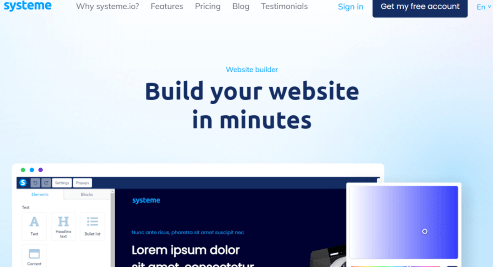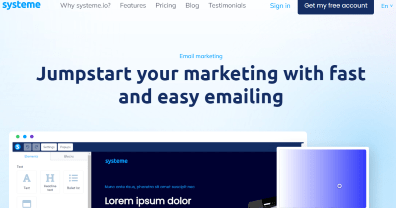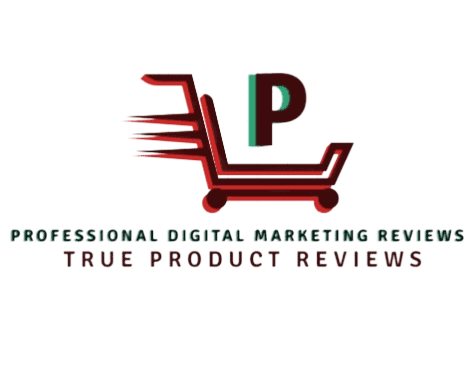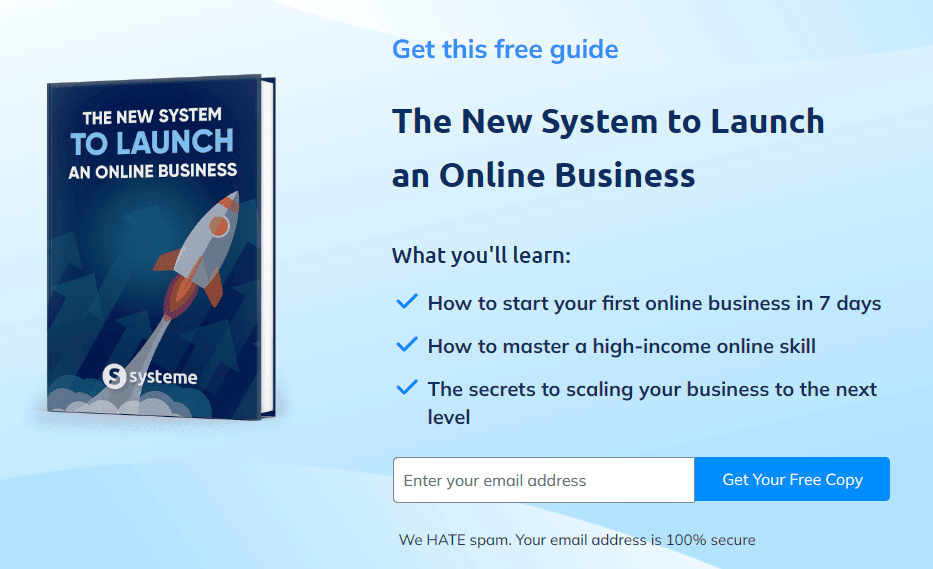Are you a beginner struggling to get information on how to create a website for your business? Its all here! Creating & maintaining an active website is not a simple process. It will require your effort, investment, time, and dedication. There are drawbacks, but the benefits outweigh the initial challenges. These days, a website is one of the most important tools of trade and has numerous benefits. Your business needs a strong online presence to boost visibility and effectively drive instant website traffic for survival. A website is an essential tool for reaching out to potential customers and establishing your brand for mutual benefit.
Introduction
I have come to discover that having a well-designed, user-friendly website is a necessity and not an option. Think of it as an avenue for a thriving business or a money-minting engine. A website for business is one of the most powerful marketing tools you can exploit for profit. Not only does it allow you to reach a wider audience, but it will also serve as a hub for all of your online activities. In fact, everything from channel marketing, content marketing strategy, social media engagement, and e-commerce transactions.
If you’re new to the world of web design, making a website may seem like an uphill task. However, with the best website builder, hosting, and the right guidance and resources, you can build a strong online platform for your business. In this article, we will break down the process of how to create a WordPress website into very simple steps and explore some of the key benefits that come with establishing an online presence.
The Most Important Factors on How to Create a Website
But, before you think of how to create a WordPress website, there are several important factors you need to consider:
1. Your interest: You cannot just create a website for everything. Let your passion and what drives you lead you to your cherished business. If, for example, you are a dog lover, an insurance agent, or a doctor, think of creating a website related to that.
2. The service or product: What will you be promoting on your website? This is critical in determining your rewards or profits, unless your website is just for fun. Think critically and choose a popular product or service that will help your fans.
3. Your target subscribers/clients: Who is your target audience? Decide firsthand who will be your buddy or fan, of course, taking into account how you’ll be helping them. People out there need solutions to their problems. Identify, and help solve them, and you’ll succeed.
4. Strategic plan: Set your goals. Work with a plan and identify actionable objectives that you must evaluate in the entire creation process.
4. Time: To make a website for business, you’ll need ample time. You’ll need to dedicate a good time management plan to succeed in online business marketing. Create a time schedule for nurturing and crafting your free website.
5. Keyword research: Do in-depth keyword research on your selected niche using keyword research tools like Google Keyword Planner. It will assist you in obtaining the best, on-demand, and low-competition keywords for ranking higher in search engines.
The procedures for creating a website are basically similar, but with a few variations. Some are detailed, while others are just outlines.
Simple, Vital Steps on How to Create a WordPress Website
Step 1: Choose Your Domain Name:
First, before you think of anything website, make a list of at least 10 unique names you would like to use as your site name. It is called a domain name on the internet. Do a Google search, and you’ll come up with a heap of related names for your website. Google is the most popular search engine and commands the biggest chunk of the internet. Check availability and choose the best one that fits your niche.

If possible, your domain name should be catchy, short, and appropriate for your business. Next, choose a popular extension for the domain name (.org,.com,.net)…com is the most popular choice for commerce.
The domain name you select will essentially be your web address. It is what people type into their browser to get to your site (e.g., https..//www.yourbusinessname.com). Choose a domain name (or URL) that reflects your brand identity and is easy to remember, nothing complicated. Long and complicated names discourage internet surfers.
Popular domain names are already taken, so when purchasing your domain name, make sure that it is available and not already in use. Use domain registrar services like Namecheap or GoDaddy to check availability and secure your chosen domain name. Google for other domain registrars, pick your choice, and pay for your domain packages.
Step 2: Choose the Best Website Builder
The second stage in creating a website is picking the best website builder. Several options exist. There are many user-friendly website builders you can choose from, like Systeme.io, Wix, or Squarespace, and content management systems (CMS) like WordPress or Joomla. Every platform has detailed, step-by-step instructions on how to proceed.
If you’re a beginner and new to web design, you need something simple yet effective. The best bet is to use a drag-and-drop website builder like Wix or Weebly. They’ll do just fine and are beginner-friendly.
You should also consider crucial factors such as customization options, ease of use, and scalability when choosing the best website builder. The best tool for advanced users looking for greater flexibility and control over their site’s functionality and design elements may be WordPress or Joomla. These are intuitive tools with loads of extra features to help craft an effective marketing channel.
We recommend the affordable Systeme.io’s simple to use website builder to create your website

Step 3: Set up Website Hosting
After you have selected and registered your domain name, the next key step is to set up web hosting services for your website. Web hosting is basically a service that will allow you or any other person to publish a website or web page onto the Internet.
There are various web hosting options available. You can select shared hosting, VPS (Virtual Private Server) hosting, or a dedicated server hosting for your web channel marketing.
Hosting service providers are many, but your bet is to choose one that is reliable, secure, has enough bandwidth, and has excellent customer support.
Do some research on various web hosting providers and get the best option for your specific needs. Some popular web hosts, like NameCheap, HostGator, BlueHost, and SiteGround, offer affordable shared hosting plans suitable for beginners and small businesses.
Step 4: Create a website: Design It Perfectly
Once you have secured your domain name, selected your platform, and set up a hosting service, it’s now time to start designing your website. You can easily and conveniently make your website on the Systeme.io platform. You’ll need to select website templates or themes for your site’s layout and structure. Many of the best website builders offer a series of pre-designed templates you can customize to fit into your brand image, of course with detailed guides. Here is another step-by-step guide on website set up you can refer to for more information.
If you decide to use WordPress or another CMS platform, themes from reputable sources like ThemeForest or Elegant Themes will be of great use. These platforms offer professional designs with customizable features useful to different business needs.
Make sure that your website design is easy to navigate, super responsive (mobile-friendly), and visually appealing. Optimize all visuals and use clear and precise calls-to-action (CTAs) to guide visitors through your site. Read this detailed guide on how to make a WordPress website and get insights.
Step 5: Create Compelling Content
Now that you have created your website, it is essential to create high-quality text content for engaging visitors. This is the driving force behind conversions on your website. That means you have to create a blog. It is the best strategy for content marketing. Make informative blog posts related to your industry, and strive for clear, concise writing that adds value to your readers. The majority of readers usually search for answers or solutions to their problems or to satisfy their curiosity.
In addition to text-based content, it is important to consider incorporating other engaging elements. These include visual elements such as videos, slideshows, images, and infographics that enhance the overall user experience.
Creating compelling content improves user engagement and boosts SEO performance by targeting appropriate keywords related to your business niche.
One important tip: For you to easily succeed, consider working with experienced copywriters or digital marketing agencies that specialize in crafting tailored content. You’ll get loads of passionate and creative professional content for your website. Make use of content management tools like QuillBot or Grammarly to fine-tune your written content to make it unique and avoid grammatical errors. Avoid clogging keywords; write for humans, not machines!
Read this article on digital marketing strategies to learn more.
Step 6: Publish Your Website
Let’s revisit the process before we wind up. You have done domain registration, hosting, installing, and customizing your selected theme. Then you’ve installed the necessary plugins, added common pages, created a created a navigation menu, and created a blog with at least a few original articles. The remaining part is to launch your website and finally promote it. That is the ideal situation. But you can opt to publish the website before you create your articles, which serves little purpose since it has no meaningful material.
Step 7: Promote Your Website
Now that you have a whole beautifully crafted website, what next? Share it with every other soul! Share your opinion, idea, advice or solution. It all boils down to mutual benefit. So how do you share or promote your website? There are several effective ways to do that. Aggressively start by doing the following:
- Create and regularly post marketing strategy contents
- Submit your website to online directories for visibility
- Try social media marketing to reach a variety of audiences and build brand awareness (Pinterest, LinkedIn, Facebook, X, etc.)
- Using SEO tactics to help rank in Google and other search engines
- Embrace email marketing platforms (Systeme.io, Aweber, MailChimp, etc.,)
- Post to forums like Reddit by creating a thread
- Use your email signature
- And many more…
We recommend Systeme.io free email marketing system to send unlimited email campaigns

Learn more on how to promote your website for free in this Wix article
Advantages of Maintaining an Elegant Website:
Now let’s delve into some of the key benefits of having a website for your business. You may even start to wonder what are channels in marketing, and their aim?
Having a well-designed website for your business venture has many benefits. Let’s explore briefly into some of the most important ones:
Top 5 Benefits of Making a Website
- Displaying Products/Services: You have products or services to offer to your clients. How will they know what your business is about? Let your website acts as an online shop for both physical and digital products/services. Let your visitors decide on what to buy through displaying high-quality images, pricing information, detailed descriptions, and customer reviews. Give them what they need, entice them to make purchases.
- Establish Credibility and Trust: These are two very important qualities of a marketer. Potential clients are more likely to believe in you if your website is elegant. It will act as a central point where customers can explore your goods and services, contact you, and discover more about your business.
- Reach A Broader Audience: Your website will let you connect with new clients online regardless of where they are in the world. If you are online, you’ll be able to reach potential customers beyond geographic boundaries. Today, the internet is globally available. Think of the global markets and expanding your customer base by optimizing your website.
- Promotes Conversions: This is a business. You need to sell whatever you have, and in a big way. A well-crafted website simplifies online purchases by offering secure payment methods, easily accessible order forms, and pertinent product details. If you are offering a service-based business, create a website, an elegant one to serve as a lead generation magnet. This will help you capture visitor information through contact forms or newsletter sign-ups and post your offer. Its a nice investing for beginners.
- Enhances Customer Service: Instant customer support is key to any successful business. Websites like yours can offer helpful resources that consumers use to find the answers to their inquiries. They don’t need to talk to you directly. Let them get informational support from your FAQ pages, knowledge bases, live chat support, and helpful articles/guides. Create articles based on relevant concerns of your subscribers and they will help you achieve your marketing goals.
Conclusion:
Making a website is the first beautiful step to nurture any successful online business. Want to reach a wider audience?… create a website, an outstanding one and maintain it.
Remember to chose the right platform, short and unique domain name. Set up your best hosting service, design your website elegantly, and create compelling content to enhance online presence. Additionally, try to understand the benefits of having a website through guides and tutorials. This will help you realize its importance and motivate you to invest time, money, and effort into building and maintaining it.
Follow these simple steps outlined in this article, you’ll be able to build a user-friendly and visually appealing website that effectively showcase your products or services. Start building your professional-looking and widely accessible website today and reap the numerous benefits it brings for your digital marketing business.
More relevant articles to help you on your digital marketing journey:
– Digital Marketing: Complete Guide to Online Success in 2024











